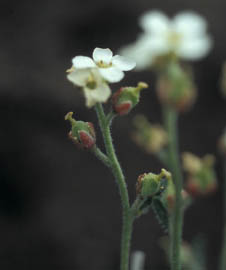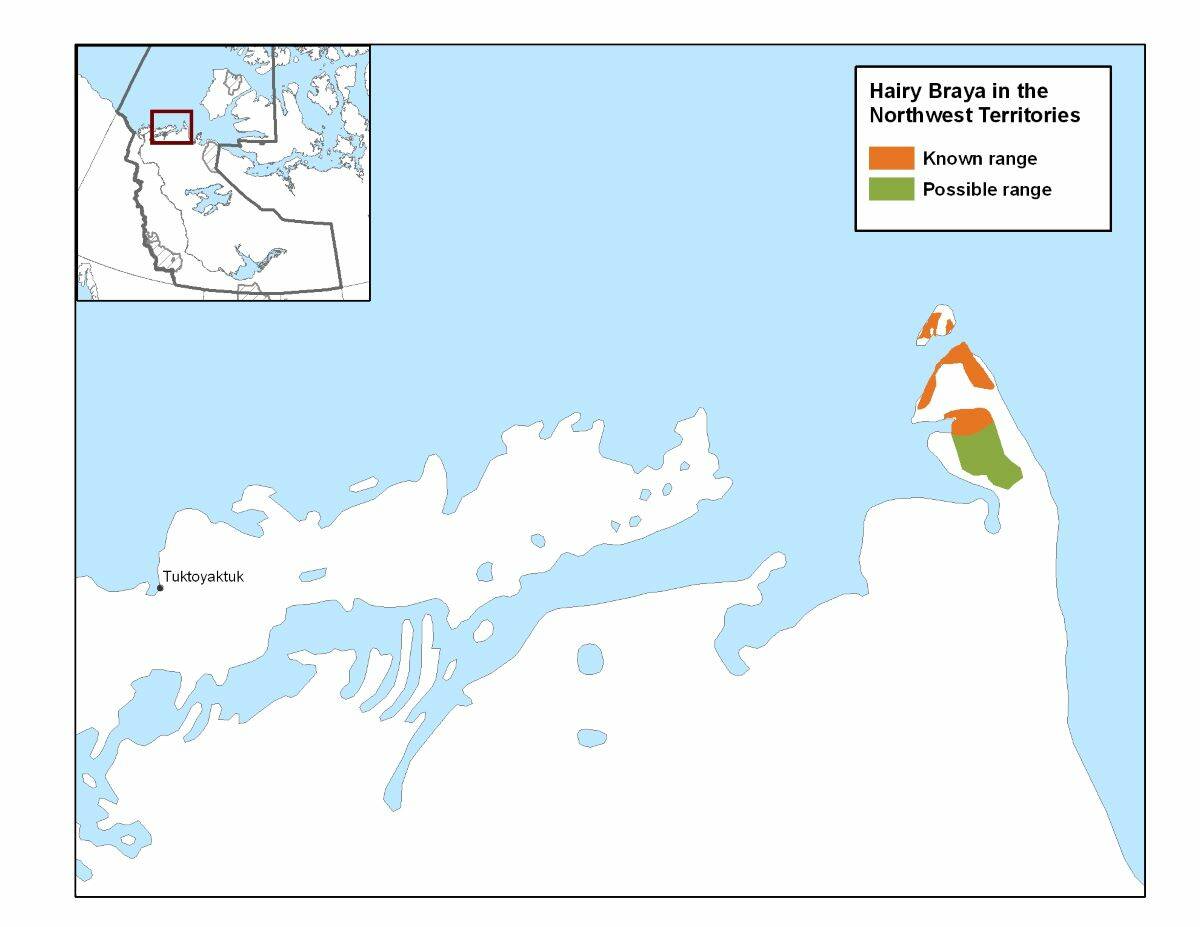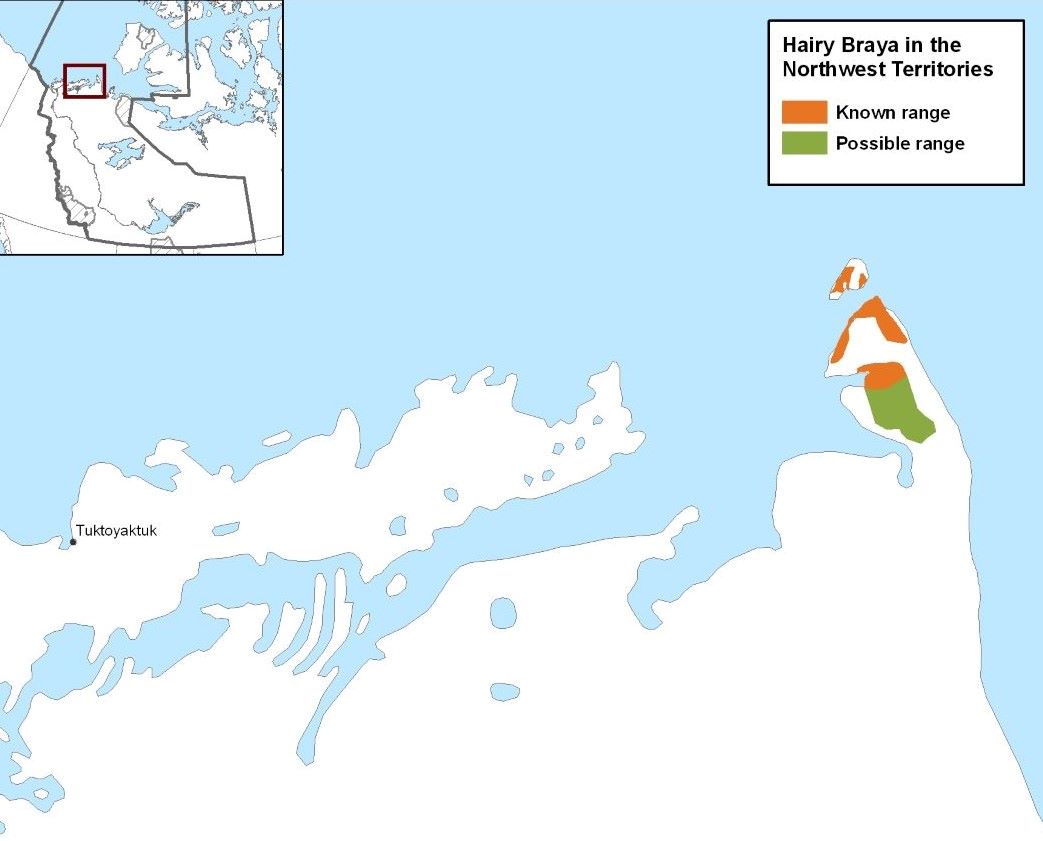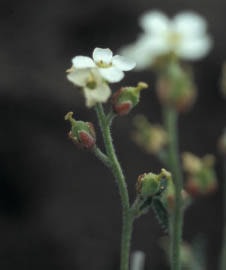
Much work is still needed to protect a threatened mustard plant in Northern NWT, according to a report from local wildlife management authorities.
A progress report on the conservation status of hairy braya was released on Nov. 16 by the Northwest Territories Conference of Management Authorities (CMA). It describes the steps that have been taken to protect hairy braya over the past four years, following the CMA’s 2016 recovery strategy for the plant, and makes recommendations for future conservation.
Joanna Wilson, a wildlife biologist and spokesperson for the CMA, says although the importance of the species to the local ecosystem is not well understood, its rarity would make its loss a significant blow to global biodiversity. “It’s unique; it’s not found anywhere else in the world. So if we did lose it, that would be a big loss to our biodiversity.”
Globally, the perennial plant is only found on Cape Bathurst and the nearby Baillie Islands. Between 15 and 20,000 specimens still exist in the Northwest Territories; however, the erosion of the coast line, harmful sea spray and the threat of storm surges all put the species at risk. These factors can all be linked to human-driven climate change, the report reads. The species has been listed as threatened by the GNWT since 2014.
Although the impacts of climate change are difficult to mitigate, Wilson says the report focuses on threats that can be addressed locally: “Some of the objectives in the recovery strategy are about things that we can do, things that are within our control. So you know, making sure we’re minimizing any potential harmful effects of human activities directly on the planet and its habitat, and making sure that some of the hairy braya plants and seeds are preserved for the future.”
Wilson says the next steps will include further research into the hairy braya’s distribution, including potential specimens in Russia, and the collecting of plants and seeds for safekeeping. “The survey was done in 2011, and there were some areas of what I would call potential habitat that they weren’t able to investigate at that time. So we would like to do another survey and get to some of those areas and learn whether or not, in fact, the plant has a slightly larger range than we might be aware of now.”
The hairy braya is the first species to receive both a recovery strategy and a progress report under NWT’s Species at Risk Act.


